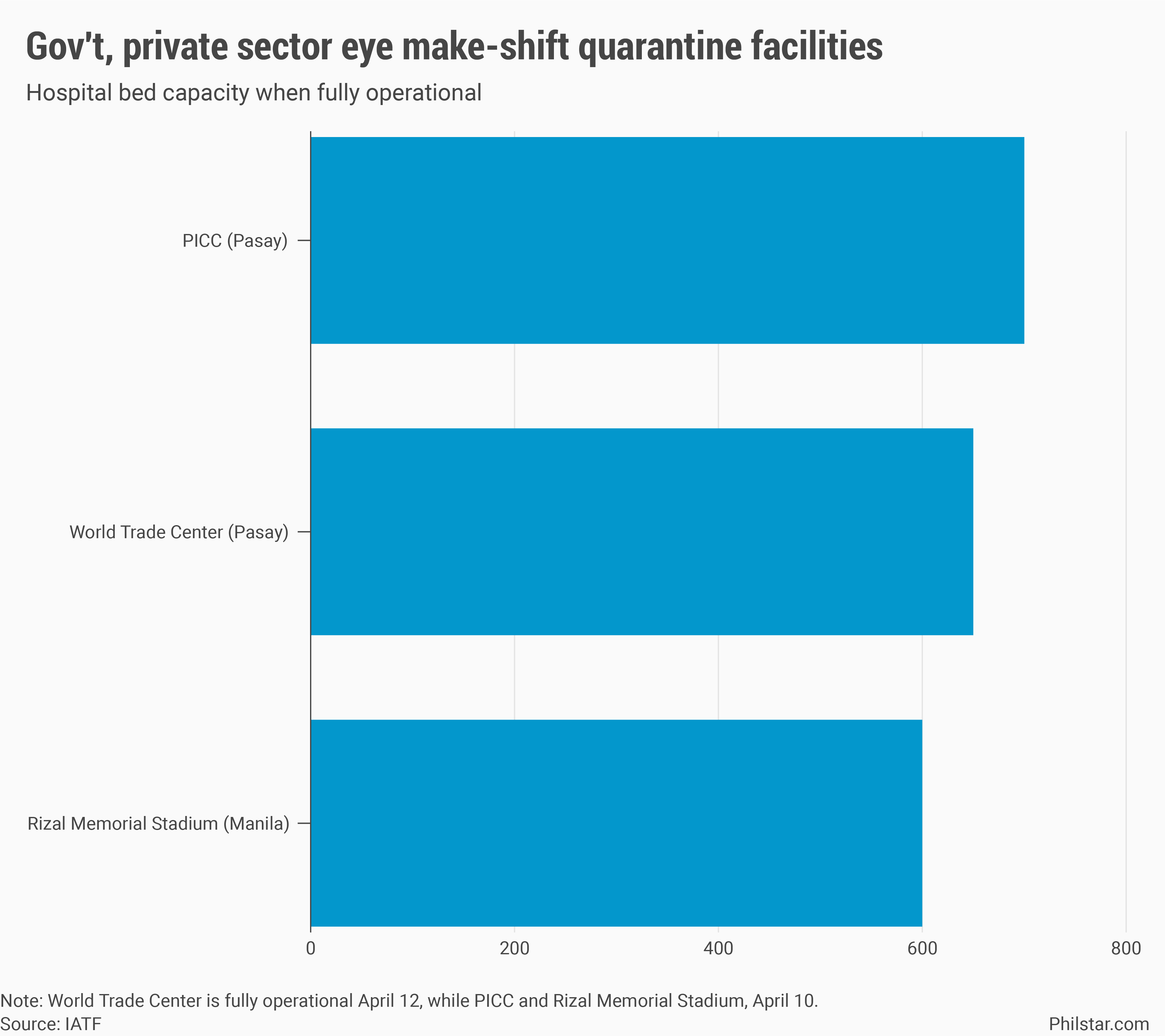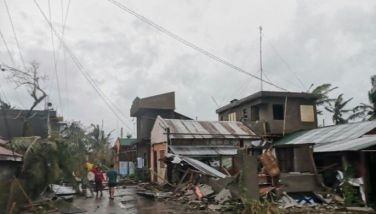Philippines converts sports centers, concert halls into quarantine sites

MANILA, Philippines — From a lack of testing kits, the Philippines’ problem now shifts to housing thousands of potential new coronavirus infections, a crucial step in outbreak response that can spell the success of containing the contagion.
The government’s solution is to convert state-owned concert halls and stadiums in the outbreak epicenter Metro Manila to house 1,950 additional hospital beds and assist overwhelmed hospitals. Private companies like Ayala Corp. and the Yuchengco Group of Companies were tapped to retrofit the event venues into isolation hubs by next week.
“The deadlines were set for full operation but as soon as even partial completion is done, these quarantine facilities may already be used,” Cabinet Secretary Karlo Nograles, who leads the interagency task force responding to the crisis, said in a virtual press briefing on Thursday.
Three structures had been immediately designated, while six others would come online in weeks that will follow. Among the three, the Philippine International Convention Center (PICC) in Pasay would have the largest capacity of 700 beds once renovations are completed.
Refurbishing PICC would be jointly worked on by the public works department and Yuchengco’s EEI Corp. until April 10, according to Nograles.
Also in Pasay, the World Trade Center will be converted into a make-shift quarantine facility by Ayala’s Makati Development Corp., after which it would house 650 beds by April 12.

The Rizal Memorial Stadium in Manila, which last year just underwent a face-lift as a sport venue for the Philippines’ hosting of Southeast Asian Games, will cater to 600 more beds once work by tycoon Enrique Razon’s Prime BMD Corp. is finished on April 10.
As of Wednesday afternoon, Metro Manila recorded a total of 1,320 confirmed cases of coronavirus disease-2019 (COVID-19), cornering 57.1% of the 2,311 cases so far, latest health department data showed.
Some of the capital’s premier hospitals like St. Luke’s Medical Center and Manuel V. Pangilinan-led Makati Medical Center have been operating in full capacity as early as last week, even as cases have just started to shoot up last March 23 with the arrival of more testing kits that accelerated diagnosis.
The overwhelmed private hospitals, where the bulk of Philippines’ hospital beds are located, have started appealing to government for help. In response, key hospitals were designated for COVID-19 patients like the Lung Center of the Philippines and Philippine General Hospital, but even these health facilities are already getting crowded.
Apart from the three buildings already being prepared for quarantine, Nograles said six other facilities will also be converted into isolation areas. These are Duty Free establishment in Paranaque, PhilSports Arena in Pasig, Quezon Memorial Circle Complex, Veterans Medical Center Complex, and Amoranto Stadium and Quezon Institute in Quezon City.
Areas outside Metro Manila
Outside Metro Manila however, it remains unclear if steps are being taken to build new isolation areas, a problem that is only likely to intensify as more cases are detected beyond the capital where health facilities are more likely to be dilapidated or lacking.
In 2016, the latest year on which official data is available, health department data showed nearly 30% of the 101,347 hospital beds are located in the National Capital Region. Only 15% or 15,196 beds could be found in hospitals at the Visayas, while only 19.8% were in Mindanao.
While unavoidable, make-shift quarantine facilities can be difficult to navigate for healthcare workers dealing with a highly infectious disease like COVID-19.
“While these facilities can help, it may prove difficult to move the infectious patients to such facilities as opposed if they were based in their respective communities, especially in the province,” Joshua San Pedro, co-convenor of the non-government organization Coalition for People’s Right to Health, told Philstar.com.
Related video:
<- Latest
- Trending



























